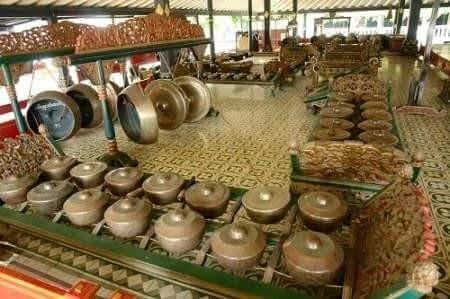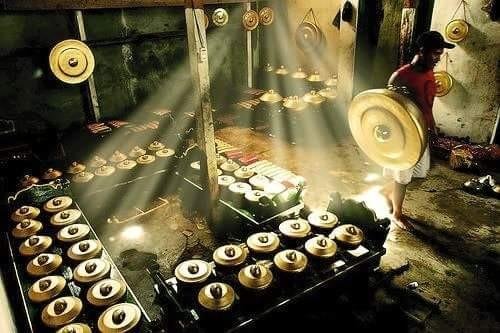Knowing the origin of Javanese musical instruments (GAMELAN)

Gamelan is an ensemble or musical instrument that usually accentuates metalofon, gambang, drum, and gong. The term gamelan refers to the instrument / instrument, which is a unified whole that is realized and sounded together. The word Gamelan itself comes from the Javanese gamel which means hitting / punching, followed by the ending that makes it a noun. Gamelan orchestras are mostly found on the islands of Java, Madura, Bali, and Lombok in Indonesia in various sizes and forms of ensembles. In Bali and Lombok today, and in Java through the 18th century, the term gong is more considered synonymous with the gamelan.

The emergence of the gamelan was preceded by Hindu-Buddhist culture that dominated Indonesia at the beginning of the historical recording period, which also represented indigenous Indonesian art. The instrument was developed to its present form in the days of the Majapahit Empire. In contrast to Indian music, the only Indian impact on gamelan music is how to dare it. In Javanese mythology, gamelan was created by Sang Hyang Guru in Era Saka, the god who controlled all of Java, with a palace in Mahendra mountain in Medangkamulan (now Mount Lawu). Sang Hyang Guru first creates a gong to summon the gods. For a more specific message then create two gongs, then finally formed a set of gamelan. [Need a reference]

The description of the first ensemble musical instrument was found in Borobudur Temple, Magelang Central Java, which has been established since the 8th century. Musical instruments such as bamboo flutes, bells, kendhang in various sizes, harps, stringed instrument plucked and picked, found in the relief. However, little element of the metal instrument found. However, the relief of the instrument is said to be the origin of the gamelan.
Tuning and making gamelan orchestra is a complex process. The gamelan uses four tuning methods, namely sléndro, pélog, degung (specifically Sundanese, or West Java), and madenda (also known as diatonic, just like the original minor scales widely used in Europe.
Gamelan music is a mixture of foreign art influences are diverse. China's tone notes, musical instruments from Southeast Asia, band drums and musical moves from India, bowed strings from the Middle East region, even the European military style we hear in traditional Javanese and Balinese music today.

The interaction of components loaded with melody, rhythm and sound color retains the glory of Balinese gamelan orchestra music. These musical pillars bring together the character of the Balinese rural community into a distinctive musical order that is an inseparable part of everyday life.
But now the gamelan is still used on formal occasions such as weddings, thanksgiving, and others. but at present, gamelan is only used by the majority of Javanese people, especially Central Java, East Java and D. I. Yogyakarta.
Very well, this is a very historic musical instrument
Thanks brothers
Amazing
Thanks
Congratulations, your post was discovered and featured by @OCD in its daily compilation 194!
You can follow @ocd – learn more about the project and see other Gems! We strive for transparency.
If you would like your posts to be resteemed by @ocd to reach a bigger audience, use the tag #ocd-resteem. You can read about it here.
@ocd now has a witness. You can vote for @ocd-witness with SteemConnect or on Steemit Witnesses to help support other undervalued authors!
Thanks to all of you @ocd I am very happy. I will follow the lead from @ocd. if you like this post resteem.
@gniksivart